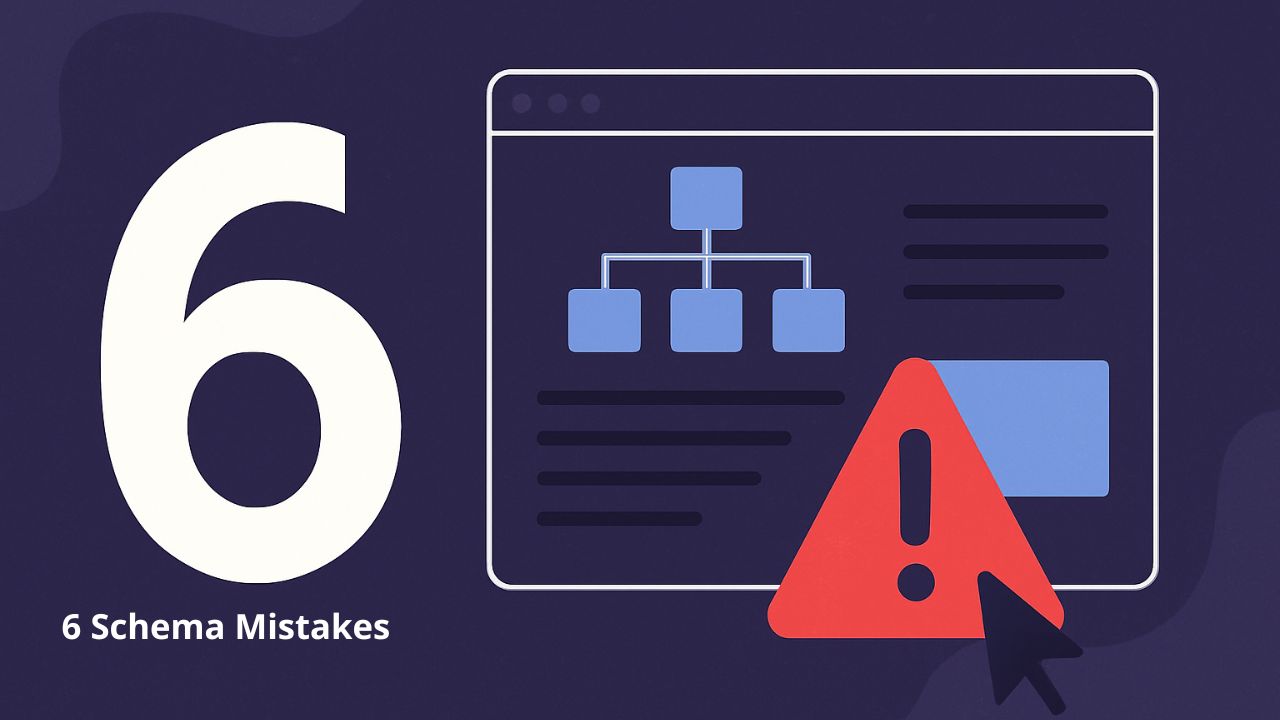Why Schema Matters More Than Ever
In today’s search landscape, schema markup isn’t optional — it’s your ticket to visibility. When implemented correctly, schema helps search engines understand your content and rewards you with rich results like star ratings, FAQs, and product details. Those enhancements can dramatically boost your click-through rate (CTR) by making your listings more attractive and trustworthy.
But here’s the catch — a single schema mistake can do more harm than good. Inaccurate or poorly structured markup can lead to lost impressions, missing rich snippets, or even penalties. Let’s uncover six of the most common schema errors that silently destroy CTR — and how to fix them before they cost you clicks.
1. Using the Wrong Schema Type
The mistake: Applying a generic or irrelevant schema (like using Article instead of Product for an e-commerce item) confuses search engines.
The consequence: Your page may not qualify for the enhanced search results it deserves.
The fix:
Always select the schema type that best describes the primary content on your page.
Use Google’s Structured Data Gallery for examples and match your schema type to your intent — Event, LocalBusiness, Recipe, Product, etc. When in doubt, test it using Rich Results Test to ensure compatibility.
2. Marking Up Hidden or Irrelevant Content
The mistake: Adding schema for content that isn’t visible to users, such as hidden reviews or keywords stuffed into the code.
The consequence: Search engines consider this misleading and may remove your page’s eligibility for rich results.
The fix:
Only mark up information that appears on the page and matches what the user actually sees. Transparency builds trust — both with readers and with Google.
3. Missing or Incorrect Required Properties
The mistake: Forgetting key properties like name, datePublished, or author (for articles) or entering placeholder text.
The consequence: Your structured data becomes invalid, preventing Google from generating a rich result.
The fix:
Check the “Required” and “Recommended” fields for each schema type at schema.org. Fill them accurately and completely. A schema with missing fields is like an unfinished resume — it never gets the callback.
4. Using Outdated or Conflicting Schema Versions
The mistake: Copying old code snippets or mixing microdata, RDFa, and JSON-LD formats on the same page.
The consequence: Inconsistent syntax leads to parsing errors and lost schema recognition.
The fix:
Stick with JSON-LD, Google’s preferred format. Validate your markup with Google’s Structured Data Testing Tool or Search Console Enhancements report to catch deprecated properties and conflicts early.
5. Applying Page-Specific Schema Site-Wide
The mistake: Adding FAQPage, HowTo, or LocalBusiness schema to every page of your website.
The consequence: Search engines may see your markup as spammy or irrelevant, reducing trust and visibility.
The fix:
Only apply schema types that reflect the content of that page. Use your CMS or tag manager to target specific templates (e.g., Product for product pages, BlogPosting for blog posts). Precision beats quantity every time.
6. Improper Nesting of Parent/Child Relationships
The mistake: Structuring your schema incorrectly — for example, placing a Review outside of the related Product or Article.
The consequence: Search engines can’t interpret which entity the data belongs to, so your rich result gets disqualified.
The fix:
Nest child schema properly within the parent object. For instance:
{
"@type": "Product",
"name": "Vintage Route 6 T-Shirt",
"review": {
"@type": "Review",
"author": "Guy Cook",
"reviewRating": {
"@type": "Rating",
"ratingValue": "5"
}
}
}
This tells Google exactly what’s being reviewed and by whom.
Wrapping Up: Clean Schema = More Clicks
Schema markup is one of the most powerful tools in your SEO toolkit — but only when it’s implemented correctly. Avoid these six pitfalls, validate your markup regularly, and keep your structured data aligned with the visible content.
When your schema is clean and accurate, your listings become more appealing, your CTR climbs, and your audience gets a richer search experience.
Pro tip: Make schema testing part of your publishing workflow. A few extra minutes spent validating can translate into thousands of additional clicks down the road.
Got a Minute? Checkout today’s episode
6 Schema Mistakes Destroying Your Click?Through Rate
—-more—-I help goal oriented business owners that run established companies to leverage the power of the internet
Contact Guy R Cook @ https://guyrcook.com
In the meantime, go ahead follow me on X: @guyrcookreport
Click to Tweet
Follow Practical Digital Strategies on Podbean iPhone and Android App | Podbean https://bit.ly/3m6TJDV



